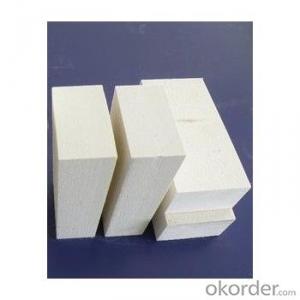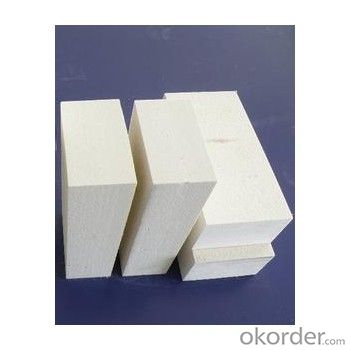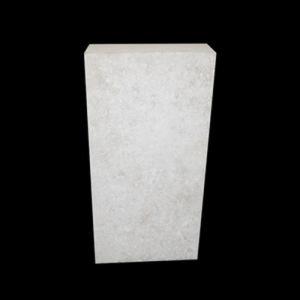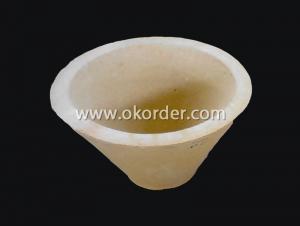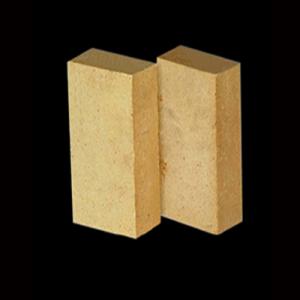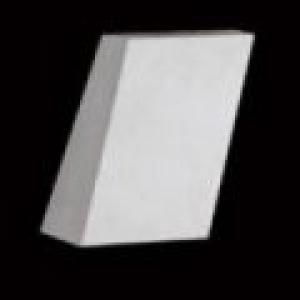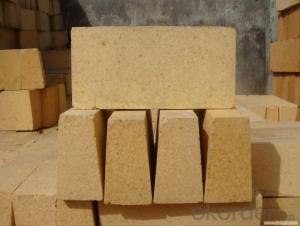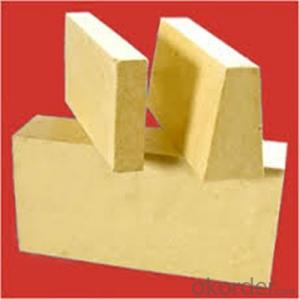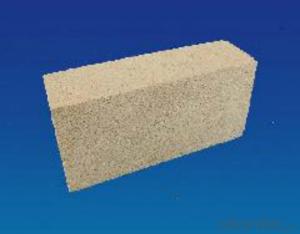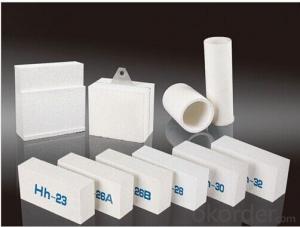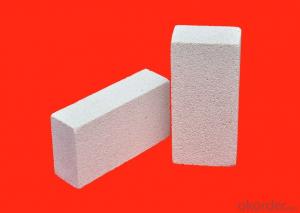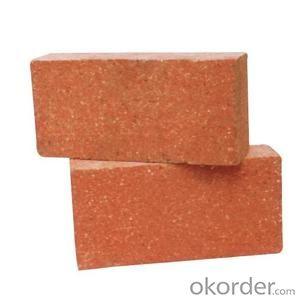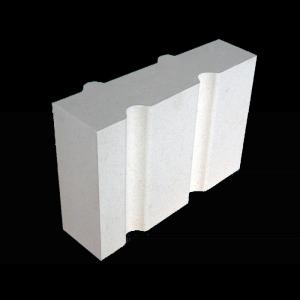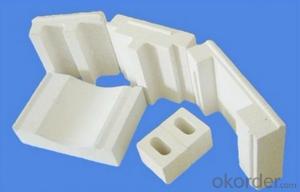Mullite Brick - Low Apparent Porosity Insulating Fire Brick
- Loading Port:
- Tianjin
- Payment Terms:
- TT OR LC
- Min Order Qty:
- 1 m.t.
- Supply Capability:
- 1000 m.t./month
OKorder Service Pledge
OKorder Financial Service
You Might Also Like
Packaging & Delivery
Packaging Details: | Wood carton box:10pcs/carton wooden pallet:544pcs/pallet |
Delivery Detail: | 15 Days deposit |
Mullite Insulation Refractory Bricks
Refractory Insulation Bricks
Refractory Bricks Manufacturer
Al2O3:48%,
B.D.:0.5~1.0g/c
Insulation bricks are classified under temperature between 1300ºC and 1700ºC, manufactured from high purity alumina clay by mixing, press-forming, drying, sintering and machining. Bricks contain carefully-graded organic fillers which are burned out during sintering to give a uniform controllable pore structure. This technique makes product feature low thermal conductivity and excellent heat insulation
Refractory Insulation brick can be used as a hot face lining directly exposed to the heat or as a backup insulation layer in iron and steel mills, non ferrous foundries, petrochemical, ceramic, glass, cement and oil fired electric power generating plants.
ADVANTAGES:
Light weight and low thermal conductivity allows thinner furnace walls
Maintain stable structural strength throughout ambient to maximum service temperature
Low heat storage results in rapid cooling and heating operation
Low iron and impurities to enhance reducing atmosphere
High thermal shock resistance in preventing spalling
Non standard sizes and shapes are available upon request
Quality | JM-23 | JM -26 | JM -28 | JM -30 | JM -32 | ||
Classification temperature(oC) | 1260 | 1430 | 1540 | 1650 | 1760 | ||
Bulk density (g/cm3) | 0.6 | 0.8 | 0.9 | 1 | 1.25 | ||
Crushing strength (Mpa) | 1.2 | 1.6 | 2.1 | 2.5 | 3.5 | ||
Modulus of rupture (Mpa) | 0.9 | 1.4 | 1.6 | 2.1 | 2.1 | ||
Permanent linear change (CT-30oCX24h)% | 0.5 | 0.4 | 0.5 | 0.9 | 0.9 | ||
Reversible thermal expansion at 1100oC | 0.5 | 0.7 | 0.8 | 0.9 | 1.1 | ||
Thermal shock resistance(cycles)1100oC Water cooling | 30 | 30 | 30 | 30 | 30 | ||
Thermal conductivity (W/m.k) | 400oC | 0.14 | 0.27 | 0.32 | 0.41 | 0.49 | |
600oC | 0.16 | 0.29 | 0.34 | 0.43 | 0.5 | ||
800oC | 0.18 | 0.31 | 0.36 | 0.44 | 0.51 | ||
1000oC | 0.2 | 0.33 | 0.38 | 0.45 | 0.53 | ||
1200oC | - | 0.35 | 0.41 | 0.47 | 0.56 | ||
Chemical Analysis (%) | Al2O3 | 37 | 58 | 67 | 73 | 77 | |
Fe2O3 | 0.7 | 0.7 | 0.6 | 0.5 | 0.4 | ||
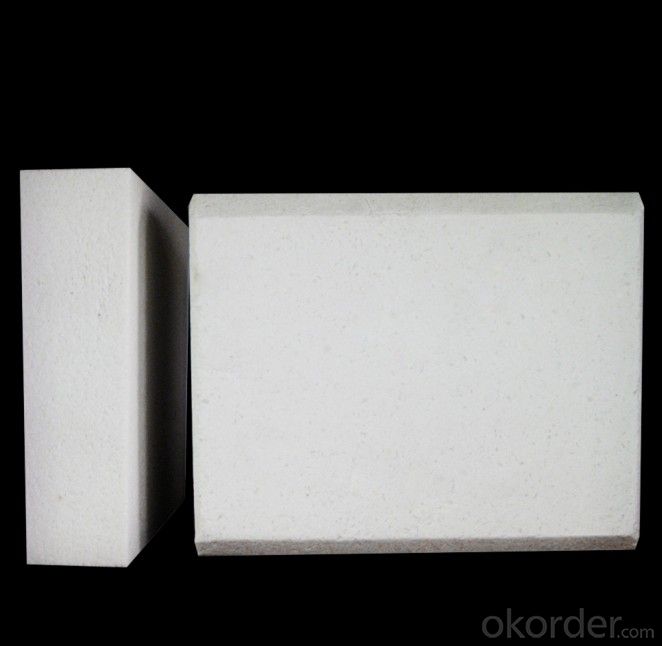
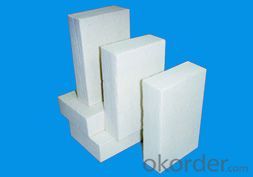
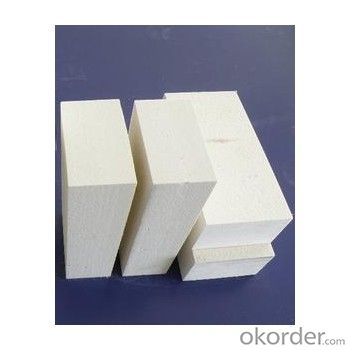
- Q: Aluminum content 38, silicon content 55 What refractory bricks?
- The mineral composition of the high alumina brick is determined by the bauxite used. The mineral composition of the clinker is usually mullite, corundum and glass. The theoretical composition of mullite is Al2O371.8%, SiO2 28.2%, and its melting decomposition temperature is 1840 DEG C. With acicular crystal, network cross structure, high temperature state showed better strength. Corundum in the form of alpha -Al2O3, melting point of 2050 degrees, hardness of Mohs 9, showing a granular and columnar crystal, has good chemical stability, acid, alkaline slag have a certain resistance. Based on the composition of mullite minerals, the phase composition of high alumina brick can be judged according to the content of Al2O3.
- Q: (refractory castable, silicon carbide brick, mullite bricks etc.) do testing should be commissioned by the project? What are the specific qualification standards? Thank you
- Different refractory materials have different requirements, specific industry or national standards, such as LZ can check the mullite bricks GB / standard, there should be a harvest, do testing project is in accordance with the requirements of the LZ need to determine the use requirements
- Q: What are the properties of corundum mullite?
- Heavy material has good compactness, high compressive strength, resistance to various corrosive gases, good thermal shock resistance, good thermal conductivity and wear resistance.
- Q: What is the difference between mullite ceramics and alumina ceramics? Can you tell me something to do with floor tiles?
- The floor tiles are not made exclusively of alumina. Pure alumina ceramics are expensive.
- Q: What is the price of refractory bricks?
- The refractory insulating brick generally refers to light brick, normal furnace lining are using this brick kiln will not increase the weight, and good heat insulation effect and ordinary insulating brick production are made of clay, high alumina high strength low iron bead brick, mullite, high aluminum light insulating firebrick, diatomite insulating refractory brick, the use of light heat insulation brick can increase the use of space, and good insulation effect
- Q: Mullite bricks in alumina alumina is what?
- Mullite (3Al2O3 - 2SiO2) high alumina refractory materials as the main crystal phase. The general alumina content in 65% ~ 75%. In addition to mineral composition of mullite, alumina containing low also contain a small amount of glass phase and cristobalite; alumina containing high also contain a small amount of corundum. Highrefractoriness, up to over 1790 DEG C 1600. Load softening start temperature to 1700 DEG C. Compressive strength at room temperature is 70 ~ 260MPa.. The thermal shock resistance of sintered mullite and fused mullite brick two. Sintered mullite brick with high bauxite clinker as the main raw material, adding a small amount of clay or alum clay as binder, forming and sintering made of fused mullite bricks with high alumina and bauxite, refractory clay as raw material, adding charcoal or coke fines as a reducing agent, formed by reduction of electric melting method to manufacture. The crystallization of fused mullite than sintered mullite, thermal resistance Shock resistance than sintered products. The uniformity of content in alumina mainly depends on their high temperature properties and mullite phase and glass distribution. Mainly used in blast furnace, furnace top and bottom furnace, glass furnace regenerator, sintering kiln, petroleum cracking system dead lining.
- Q: Jm26 mullite aluminum content in the number, ask God to answer. 23 more. How is this identified with the naked eye?
- Under strong alkaline conditions, aluminum is separated from other metal ions by the amphoteric nature of aluminum.
- Q: Mullite brick
- High refractoriness, up to 1790 degrees celsius. The softening start temperature is 1600~1700 degrees. The compressive strength at normal temperature is 70 ~ 260MPa. Good thermal shock resistance. The sintered mullite and fused mullite brick two. Sintered mullite brick with high bauxite clinker as the main raw material, adding a small amount of clay or raw bauxite as binder, after molding, sintering and made. Fused mullite brick with high bauxite, alumina and refractory clay as raw material, adding charcoal or coke fines as a reducing agent, formed by reduction of electric melting method to manufacture. The crystallization of fused mullite is larger than that of sintered mullite, and the thermal shock resistance is better than that of sintered products. Their high temperature performance mainly depends on the content of alumina and the uniformity of the phase distribution of mullite and glass. [1]
- Q: What are the varieties of polycrystalline mullite?
- PMF (polycrystalline mullite fiber) is an international super light resistant high temperature heat insulation material of the latest, it consists of mullite micro crystal which integrates crystal and fiber materials properties in one, has an excellent thermal stability, temperature 1500, melting point 1840, the thermal conductivity of refractory brick is a traditional 1/6, bulk only the 1/25 is the ideal material for high temperature furnace energy saving.
- Q: Refractory bricks (mullite bricks) can be used on the walls of buildings?
- Refractory bricks used in the firewall, the first choice of national standard model, its size is 230mmx114mmx65mm, model T-3, component 3.5-3.7kg, and sometimes will use refractory bricks, seven separately to make up for the effect. Refractory brick in masonry usually fireclay, refractory soil adhesion is very strong, and has a certain degree of refractory refractory, so was widely used in refractory masonry, in building fire protection requirements if the fire rating is high, to the selection of refractory masonry cement, refractory cement refractoriness of fireclay than about 500 DEG C high.
Send your message to us
Mullite Brick - Low Apparent Porosity Insulating Fire Brick
- Loading Port:
- Tianjin
- Payment Terms:
- TT OR LC
- Min Order Qty:
- 1 m.t.
- Supply Capability:
- 1000 m.t./month
OKorder Service Pledge
OKorder Financial Service
Similar products
Hot products
Hot Searches
Related keywords
